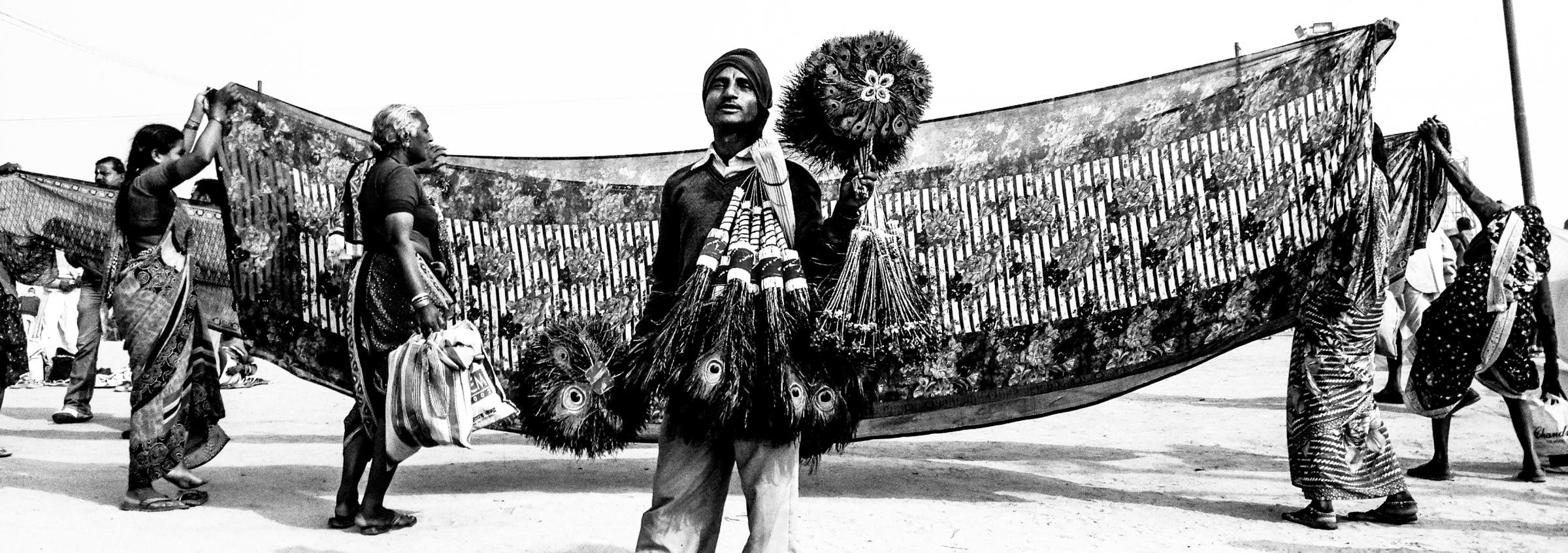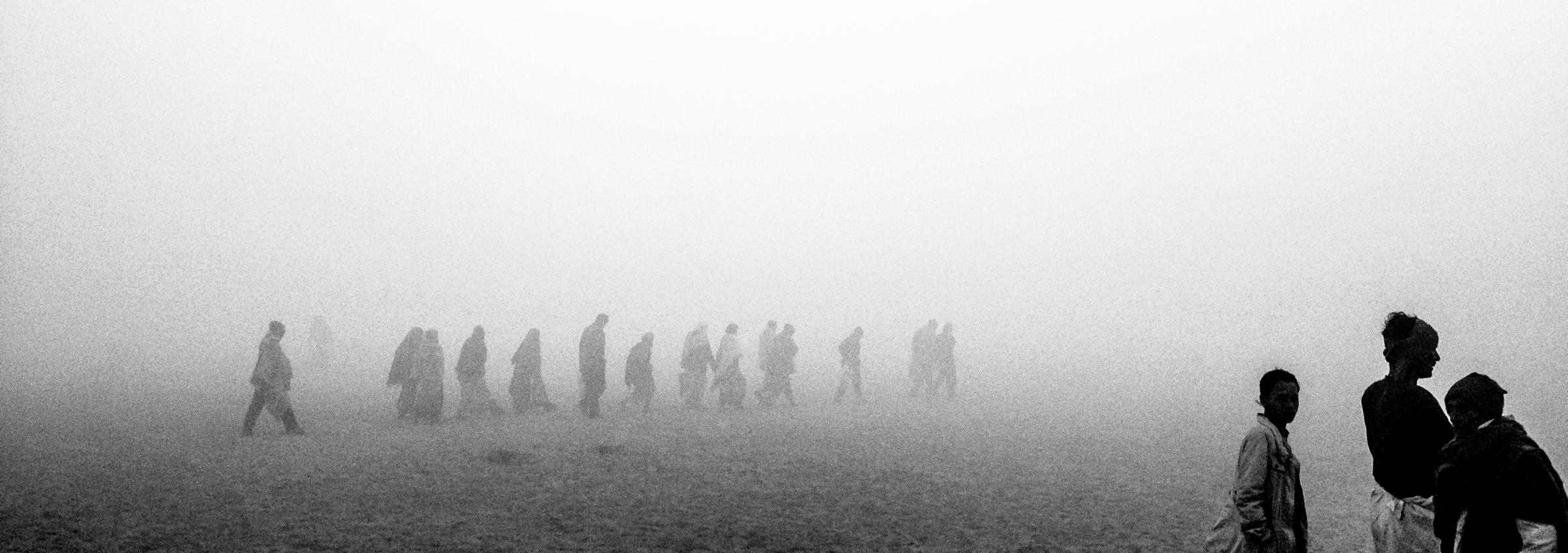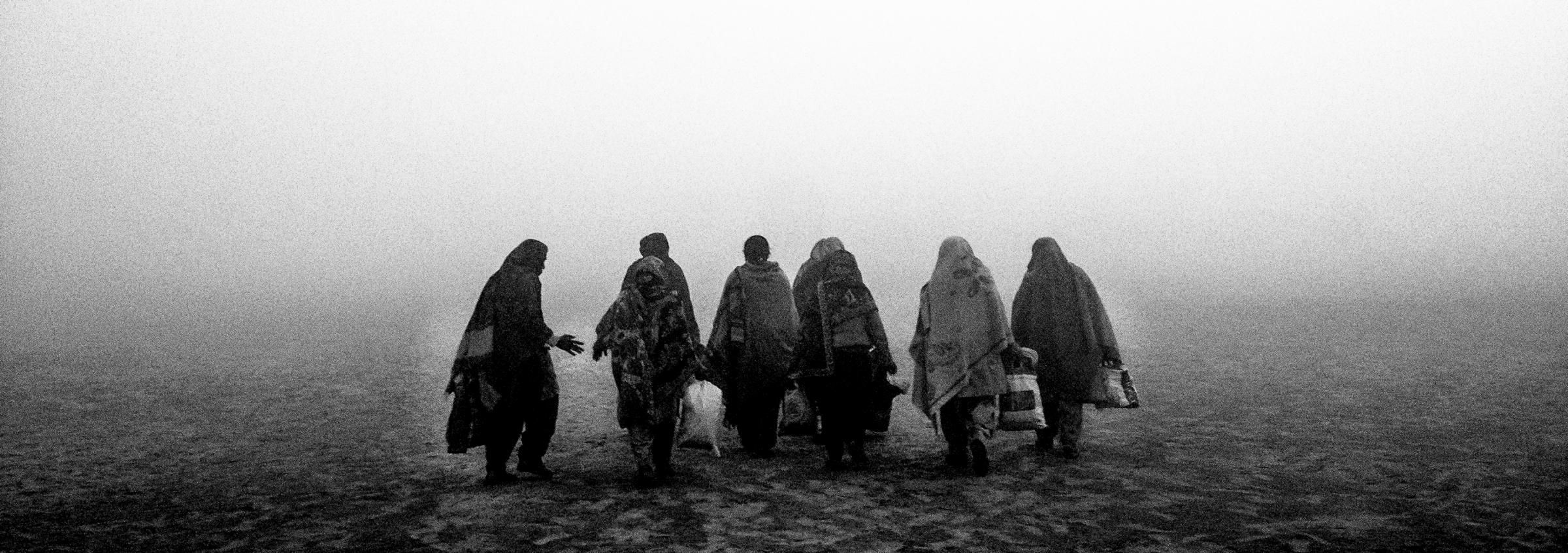
The Maha Kumbh Mela, believed to be the largest religious gathering on earth, is held every 12 years on the banks of Sangam, at the confluence of the holy rivers Ganga, Yamuna and the mythical Saraswati. Lasting 55 days, it is celebrated at the holy site of Sangam in Allahabad; in 2013, by the time it’s over, around 100 million people will have made the pilgrimage to the festival.
But how does one show the largest gathering of people on the planet in photographs? My photojournalist colleagues and I had been planning for months to try and document the Kumbh Mela, but there seemed to be no concrete information anywhere on the best way to organize our shoots. The most basic questions were difficult to answer: How would we cover the event? Would we work on the ground? From the water? And, most fundamentally, how would we differentiate our work from the work of countless other photographers covering the gathering? How, in the end, does one convey something so unfathomably vast in pictures?
Then it came to me: I had to shoot from the air.
Earlier this year, while passing through TIME’s offices in New York, I pitched an idea to photograph the gathering from above, using a drone. I had done months of research to work out the most cost-effective and safest option for getting a small Go-Pro camera into the air. The plan was to fly a drone/helicopter that I had purchased in the States on the most auspicious day of the Kumbh — Feb. 10th — where the crowds were expected to swell to anywhere from 30 to 40 million people.
But after long discussions with a colleague in Delhi, my concerns about safety proved insurmountable. What if the drone accidentally came down into the crowd? What if we caused a stampede? The last thing I wanted was for a villager to mistake my image-capturing device for the latest Pakistani military drone sent to cause havoc in Indian airspace. In some cases, a little bit of healthy paranoia is a good thing, and in hindsight I’m glad that I erred on the side of caution.
(As it turns out, a French cameraman and a helicopter pilot were arrested when they flew perilously low over the bathing area on the busiest day of the festival, with the down-wash of their copter flipping boats over.)
With the drone plans tossed out the window, however, I had to look for the next best way to cover the Kumbh. The ability to move through crowds quickly and nimbly would be key, as would the ability to preserve my equipment; many people lost cameras after being splashed by excited pilgrims moving towards Sangam.
Another challenge came from the police and the sadhus (holy men), who, in some cases, were very aggressive in turning their lathi sticks on the crowds. At one stage, I was standing on a fence to shoot from an elevated position. From one side, a policeman began hitting my legs with his heavy wooden lathi stick and on the other, a Hindu holy man hit me with a metal rod. As I climbed down from the fence, a Sadvhi, or holy woman, clocked me in the head with a sandal. Some of the sadhus loved to get the attention of the photographers, while others made it their mission and felt it was their duty to whack anyone who came within reach.
I decided the best course of action was probably to shoot with as little gear as possible. I supplemented my 35mm coverage with my iPhone, shooting the panoramas you see here. On the biggest bathing days of the Kumbh, it was quite a challenge to make images that did not include the hoards of photographers who show up from all around the world to cover the amazing spectacle.
Witnessing literally millions of faithful pilgrims coming into contact with waters they consider holy was a deeply emotional experience for me — a once-in-a-lifetime experience on an inconceivably grand scale.
Daniel Berehulak is a photographer for Getty Images based in New Delhi. LightBox previously featured Berehulak’s work during the Egyptian elections, as well as his feature on India’s coal miners.












More Must-Reads from TIME
- Cybersecurity Experts Are Sounding the Alarm on DOGE
- Meet the 2025 Women of the Year
- The Harsh Truth About Disability Inclusion
- Why Do More Young Adults Have Cancer?
- Colman Domingo Leads With Radical Love
- How to Get Better at Doing Things Alone
- Michelle Zauner Stares Down the Darkness
Contact us at letters@time.com